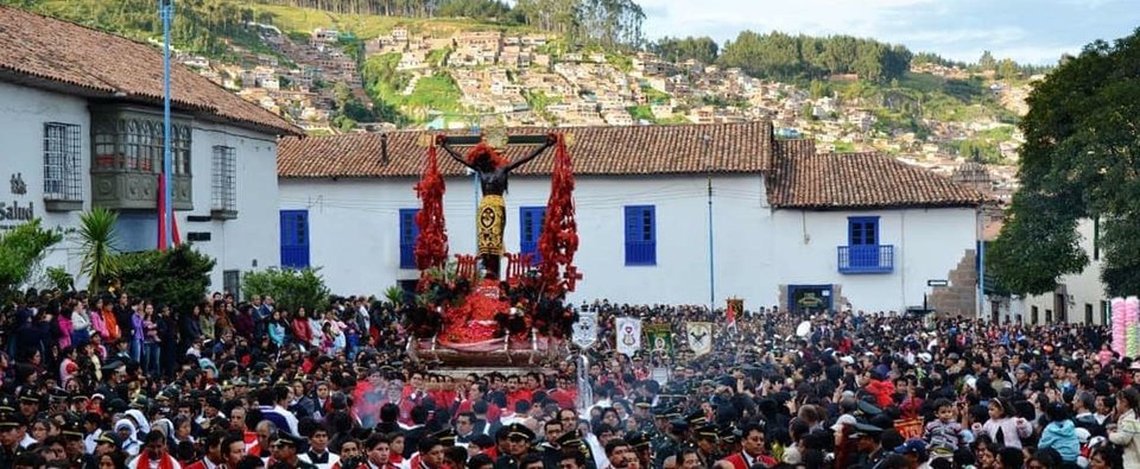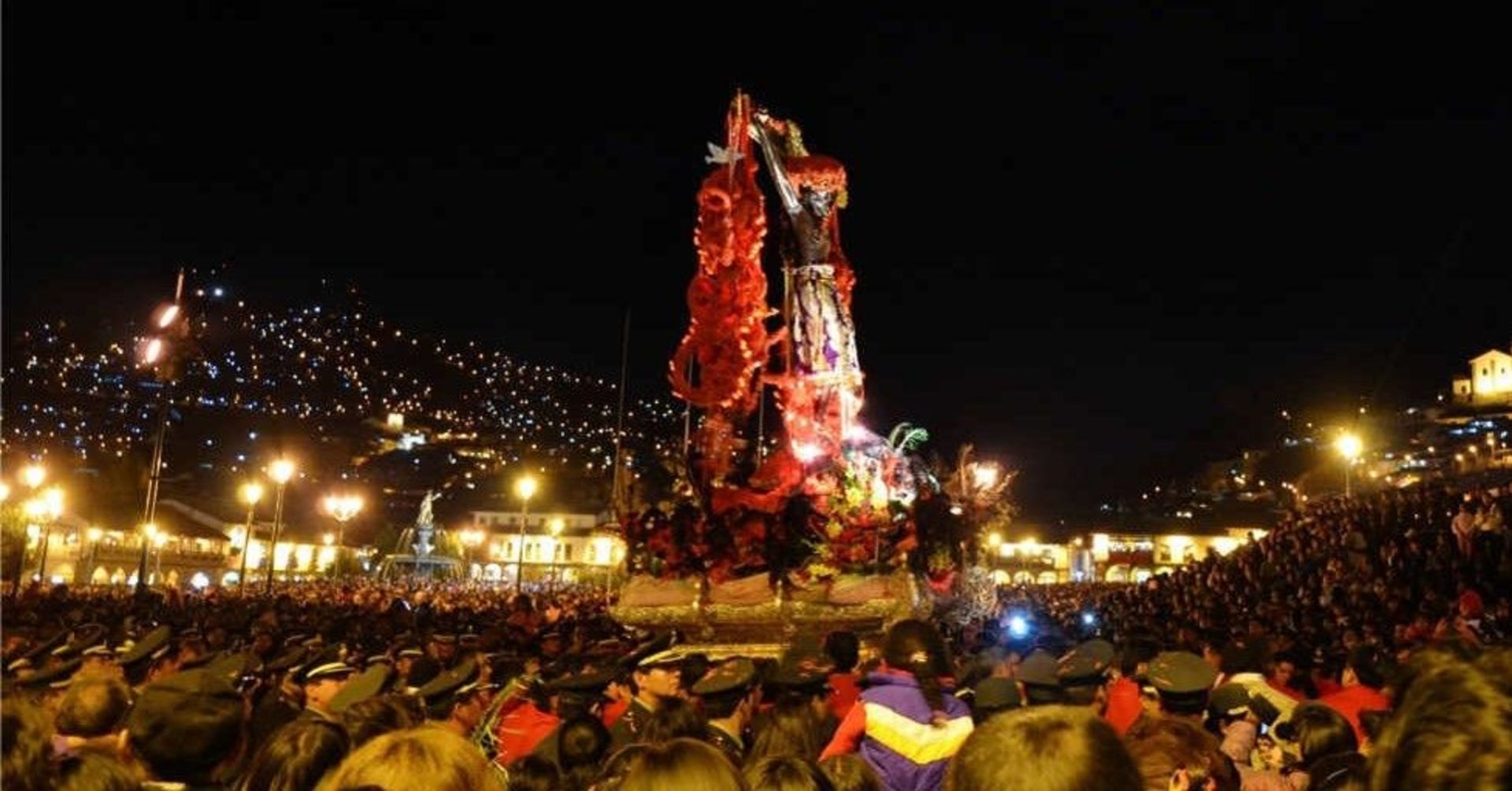Lord of the Earthquakes
This beautiful and fascinating ceremony is a fusion of traditional Andean and Catholic beliefs.

Posted on Wed 21 Apr 2021
Señor de los Temblores - Monday before Good Friday (Movable date, depending on Easter)
This beautiful and fascinating ceremony is a fusion of traditional Andean and Catholic beliefs. The celebration of Taytacha Temblores, or Lord of the Earthquakes, initiates Easter Holy Week in Cusco. This celebration has existed since 1650, when the faithful say that a painting of a crucified Christ calmed the aftershocks of a devastating earthquake and saved the city of Cusco. A statue was donated by King Charles V to be paraded through the streets of Cusco on a bier. Over time, this originally gold-colored statue has become blackened by soot from incense and votive candles and pollen from the flowers thrown at it. No one has ever cleaned it as the color gives Christ an appropriately dark and somber aspect.
The statue is normally kept in the Cusco Cathedral, which is built on the foundations of an Inca temple dedicated to their creator god Wiracocha. Worshippers carry the statue through the streets just as the Incas used to bear their living emperors and the mummies of deceased ones. The streets are covered in blood-red ñucchu flowers which are thrown at the statue of Christ and used to make his crown. These crimson flowers now symbolize the blood of Christ but were historically used as offerings to the gods Kon and Wiracocha.
Within local Cusco culture, each family believes in a different version of God (Señor de Qoyllur Riti, Señor de los Milagros, Señor de Huanca, etc.) based on their upbringing and where they live, but everyone turns out for the Señor de los Temblores festival. The threat to the Cusco region from earthquakes affects and unites everyone, regardless of their beliefs.
Celebration of Lord of Earthquakes in Cusco
